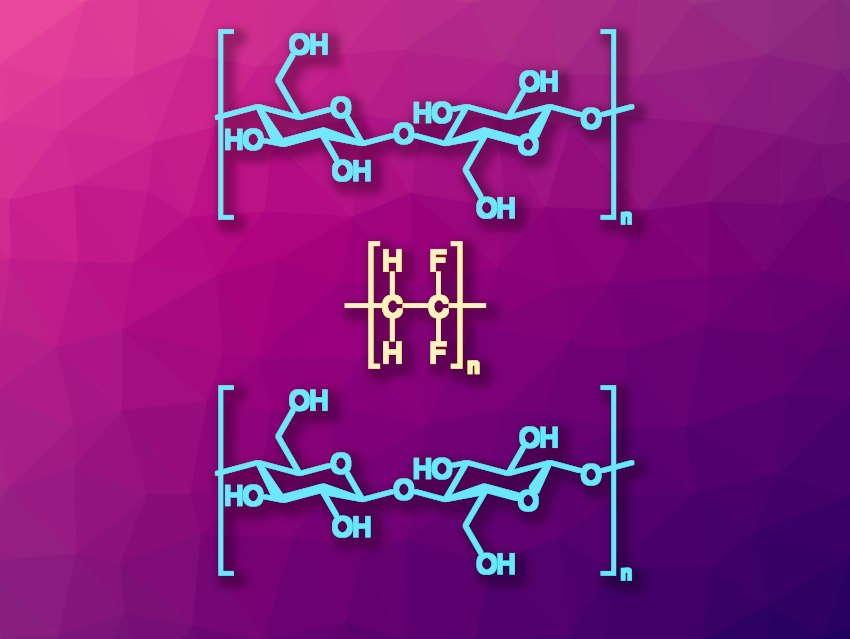Triboelectric nanogenerators (TENGs) can transform mechanical energy into electrical energy through the triboelectric effect. The triboelectric effect is a phenomenon in which certain materials become electrically charged after they are separated from a different material with which they were in contact. TENGs can also be used for sensing applications, providing information about the presence of an electrostatically charged object near the sensor with no requirement for direct physical contact. However, higher temperatures lead to the dissipation of triboelectric charges, decreasing the sensitivity of such sensors and also affecting their stability.
Shuangxi Nie, Guangxi University, Nanning, China, and colleagues have developed a triboelectric nanopaper with improved thermal stability, which was used to build a TENG-based, wearable, self-powered, noncontact sensor for motion and temperature monitoring. The team used polyvinylidene fluoride (PVDF, pictured in yellow) as a charge retention phase. Networks of PVDF fibers were prepared using electrospinning and then integrated into a cellulose nanofiber phase (cellulose pictured in blue) that has charge generation capabilities. The cellulose nanofiber layers were closely combined with the electrospun PVDF film using vacuum filtration, and the resulting triboelectric nanopaper was dried at 50 °C.
The team found that hydrogen bonds between the cellulose and the PVDF phase lead to high structural stability. The nanopaper also showed good thermal stability, which could allow its use in harsh environments. The researchers compared the charge density decay on nanopaper with and without the PVDF charge retention phase and found that the surface charge density of the “pure” nanopaper sinks by 35 % in 15 min, compared with only 5 % for the multiphase triboelectric nanopaper.
The team used the developed material as part of wearable noncontact sensors, which they affixed to the shoes or sleeves of volunteers. They found that the sensors can detect the positions of objects made from a suitable material up to 50 cm away, monitor movement such as walking or running, and can also serve as a noncontact warning system for high temperatures due to changes in the sensor’s electrical signal with the temperature.
- Phase-Directed Assembly of Triboelectric Nanopaper for Self-Powered Noncontact Sensing,
Jinlong Wang, Siqiyuan Zhu, Jiangtao Li, Yanhua Liu, Bin Luo, Tao Liu, Mingchao Chi, Song Zhang, Chenchen Cai, Xiuzhen Li, Cong Gao, Tong Zhao, Biying He, Shuangfei Wang, Shuangxi Nie,
Nano Lett. 2024.
https://doi.org/10.1021/acs.nanolett.4c02358


